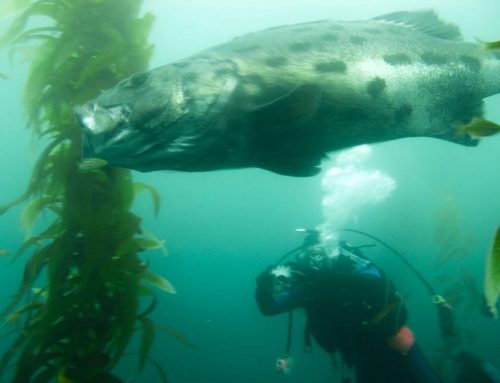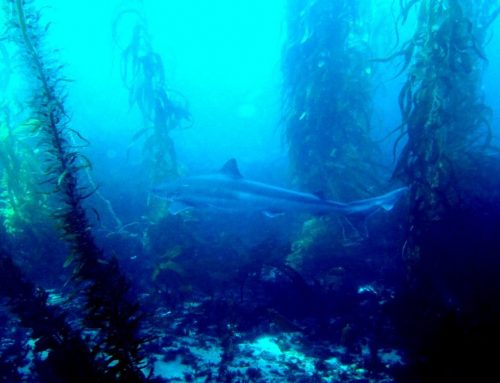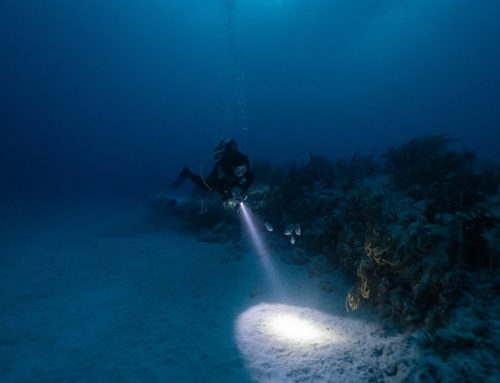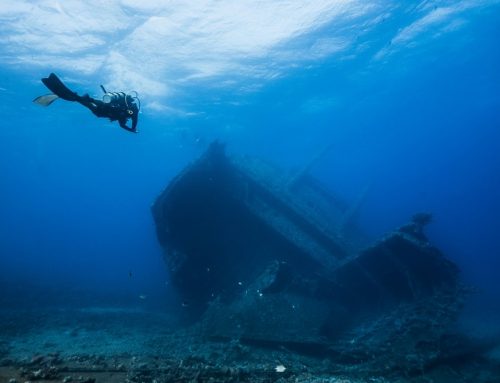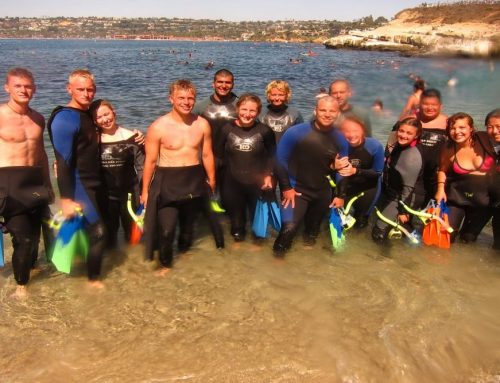Sevengill Sharks at La Jolla Cove.
Sevengill sharks started appearing in San Diego area in a large numbers a few years ago and became one of our favorite animals to encounter with while diving. Sevengill sharks migrate to the La Jolla every spring and most commonly seen in La Jolla Cove.
Diving is an amazing experience, but diving with sevengill sharks is even more exciting. We will be happy to share that experience with you.
Facts About Sevengill Sharks.
The broadnose sevengill shark (Notorynchus cepedianus) is the only common, coastal member of the cowshark family. It has a short, blunt snout, and one dorsal fin far back on the body.
Sevengill shark can reach 3 m (almost 10 ft) in total length and up to 107 kg (236 lbs). Its name comes from the presence of seven paired gill openings, compared to the five gills of most other sharks. The lifespan is estimated to last up to 50 years.
The sevengill shark’s body coloring can be described as “counter-shaded”: the brownish-gray back blends in with deeper waters when viewed from above, while the lighter belly makes the shark blend in with surface waters when viewed from below. The adaptation for camouflage is common among predatory sharks.
Even this fierce hunter must be wary of enemies. Potential predators include larger sharks such as the great white, and even other members of its own species.
The broadnose sevengill is a coastal shark. It usually stays in water less than 50 m (165 ft) deep, in bays and estuaries, and often less than 1 m (3.2 ft) deep. Typically, these sharks swim slowly along the sea floor, with occasional forays to the surface. The preferred habitat is rocky bottom substrates, and also sandy and muddy areas.
Sevengill sharks feed on a variety of prey including many kinds of bony fish, dolphins, seals, other sharks, rays, and dead matter. They have sharp and jagged upper teeth useful for grasping moving prey. The large, comb-shaped teeth of the lower jaw are for tearing and cutting.
Diet composition shifts among regions and with maturity. Younger sharks feed mainly on bony fish. Juveniles have a large mouth and are able to eat the newborns of other shark species. With age, the diet shifts to include more cartilaginous fish, and marine mammals become increasingly important for larger size classes of sevengill sharks.
Breeding Biology.
Males become sexually mature at a length of about 1.5 m (4.9 feet), and have been known to reach 1.07 m (3.5 ft). Females are much larger, reaching maturity at about 2.2 m (7.2 ft) and growing up to 3 m (9.8 ft) in total length.
Female sharks return to coastal areas after their winter migration in spring, prior to males. They move into shallow bays to give birth in the nursery grounds during spring and early summer, after a gestation period.
The litter size is large, from 60 to 108 pups. Each neonate is about 40-45 cm (16-18″) long. The young sharks stay in these very shallow waters for the first few years.

